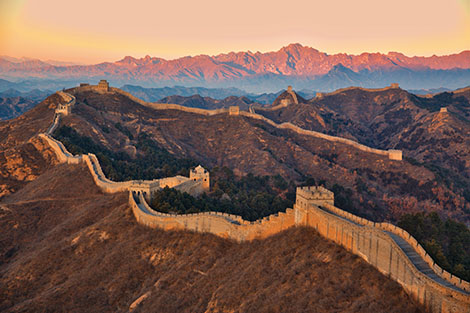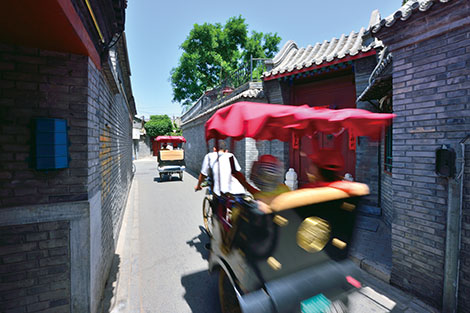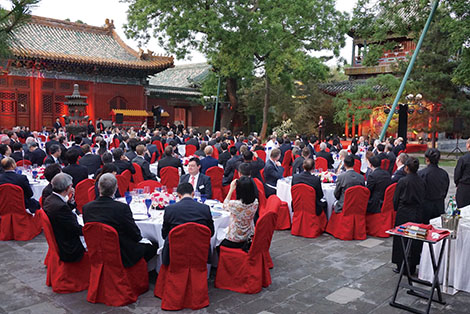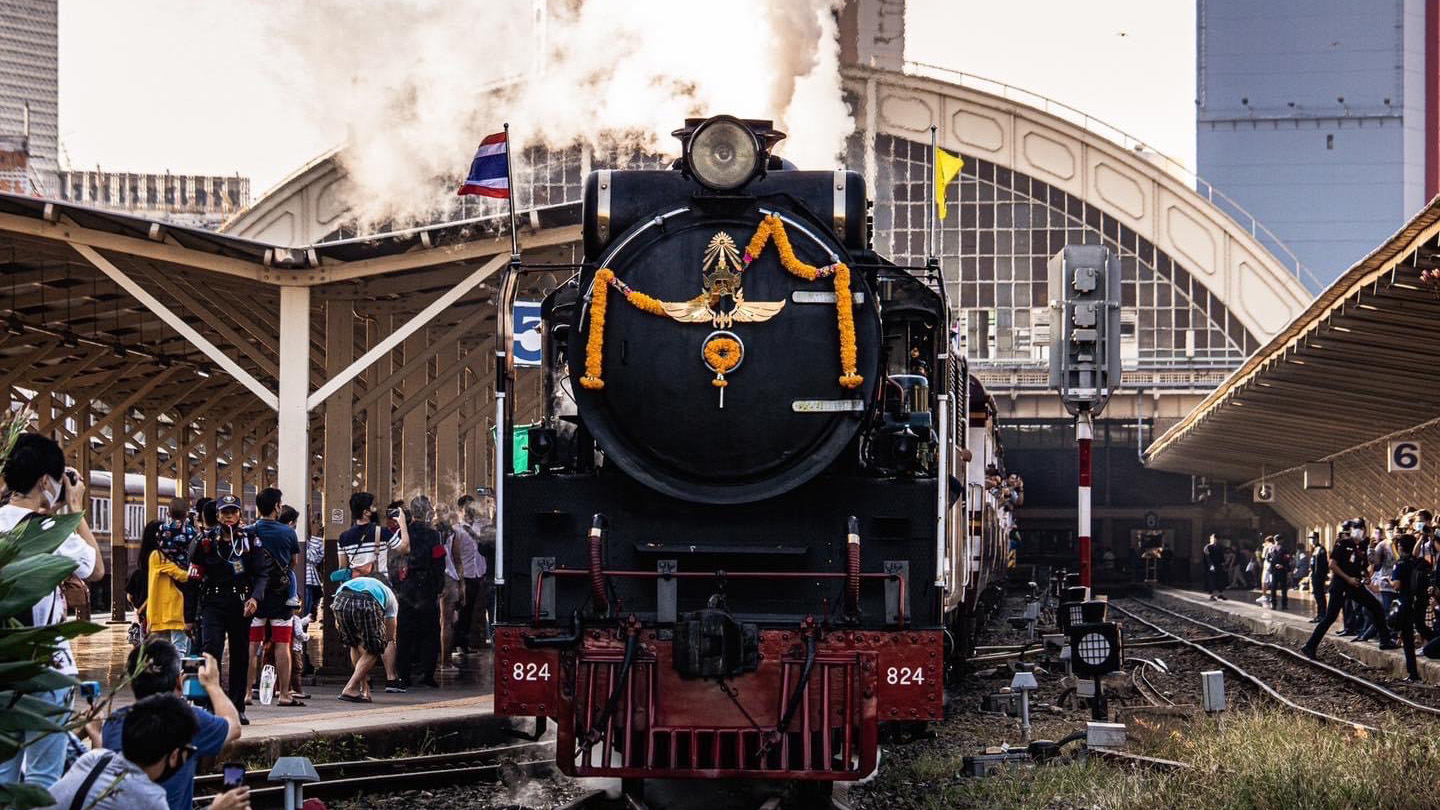
THE GREAT WALL
What’s the appeal? A world wonder … It is unthinkable to leave the Great Wall off any Beijing itinerary – the best-known architectural symbol of the entire nation. The trick is: how do you make it an exclusive event, avoiding the tourist hordes that congregate at the most popular spots?
For groups One Destination China option is to start an itinerary there, whisking guests straight from the airport to the Commune by the Great Wall hotel, which has its own private access.
“Your first dinner is overlooking the valley as the sun sets on this Wonder of the Ancient World, says Gunther Homerlein, of Destination China. “The next morning it is a group breakfast, but what you don’t know is that it will be on the Great Wall. So your first breakfast and essentially your first experience in Beijing is a breakfast on the Great Wall of China. The impact is amazing.”
For events Riviera Events recently organised festivities to the launch the Dhawa Jinshanling hotel, which is also close to the iconic structure. It included performances on the Wall and then back to the hotel’s 400 sqm ballroom, which accommodates up to 250 people for a conference or event.
destinationchina.biz – rivieraevents.com

THE HUTONGS
What’s the appeal? Seeing the real Beijing … Anyone who knows Beijing well will confirm that the real soul of the city can be found in the hutongs (alleyways) that are dotted across the central area.
They are flanked by single-storey courtyard homes that have been sub-divided, in some cases hosting up to six families in cramped conditions. The best way to explore the maze of alleys is by bicycle, or on foot, rather than hurtling through by rickshaw, as most tourists do.
For groups Most hutongs are quiet havens of peace, where the only sound is the gentle tinkling of bicycle bells, but there is one exception, bustling Nanluoguxiang, a great spot for souvenirs, should be the last stop on any hutong tour. A key player in its early development was Briton Dominic Johnson-Hill, who founded the T-shirt shop Plastered and has seen it grow into an influential brand, famed for its wacky, Beijing-inspired designs.
For events There is even an event space deep in the hutongs. Copper is a two-level former wiring factory converted into a venue for cocktails, dinners or presentations by restaurant entrepreneur Ignace Lecleir.
Another of his operations is the fine-dining Temple Restaurant Beijing, with a stunning wooden temple in the compound that can also be used for events.
trb-copper.com – plasteredtshirts.com

798 ART DISTRICT
What’s the appeal? The most important art hub in the country … The 798 art district, in the northern suburbs of Beijing, has evolved quickly, becoming one of the top ten attractions in the city.
In many ways it has become a victim of its own success – as well as major galleries, there are also scores of boutiques, coffee houses and tat shops, not to mention scores of places selling inconsequential art.
For groups It pays to have a proper plan when heading out to the complex, which is spread over a series of Bauhaus-style industrial buildings where workers once made electronic parts. Even better is a curated tour by an art expert who can ensure two quality hours of focusing on the important stuff, whether it is a display of contemporary Chinese art or a show by an international artist.
The Bespoke Travel company has guides who really know their stuff; in some cases they can gain access to studios for a chat with the artists.

BEIHAI PARK
What’s the appeal? History and character … The less well known parks in Beijing are often hidden gems with their own particular charm. Take Beihai Park for example, close to the Forbidden City and with a much longer history.
The park, which dates back to the 11th century, boasts a stunning central pagoda, built on an island, and leafy pathways. Throughout the day there are tai chi practitioners, choirs of old folk belting out revolutionary songs, dance troupes in costumes performing fan dances, people showing off their calligraphy skills and even the odd jazz saxophonist.
For events There are also atmospheric buildings, capable of hosting 200-person events. Guests can be shuttled across the lake to ensure a memorable arrival.

OLD CITY WALLS
What’s the appeal? Step back into the Ming Dynasty … Most of the historic city walls were razed after the communist takeover in 1949, but there are some intact sections left, including a stretch close to where the main hotels are located.
The Beijing City Walls Museum Park, just off the main east-west Chang ’An Avenue thoroughfare, has hosted international fashion shows in the past, with high-heeled models strutting their stuff down elevated stone walkways where armoured Ming Dynasty soldiers once marched
For groups Getting there involves climbing steep steps and walking past a well-preserved watchtower. Access to the city in days gone by was strictly controlled: the heavy wooden gates swung shut at dusk and did not open again until dawn.
For events Destination China can organise cocktails on the walls and arrange for dinner in the thick stone watchtower – with rather better food than the basic military rations the Ming-era guards were given.


